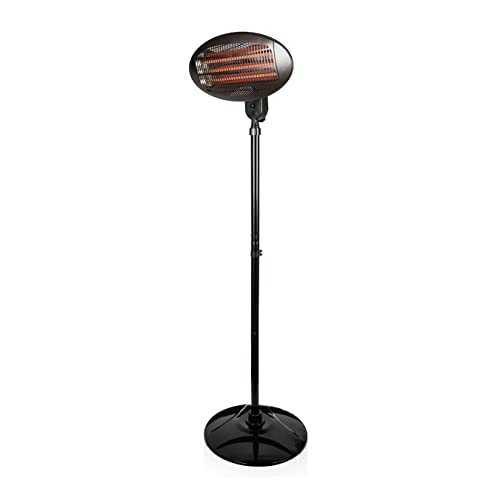How to Choose a Patio Heat Lamp Electric
When you want to heat your patio, you've got several options. Unlike propane models that require refills, electric heaters can deliver instant heat by simply flipping a switch or pressing a button.
These units also don't emit gasses that could be harmful to health. Some units are equipped with adjustable heating settings to accommodate different distances.
Heater Type
With the appropriate patio heater, you will be able to comfortably enjoy your outdoor living spaces into the night and throughout the seasons. There are many kinds of patio heaters, including freestanding natural gas and propane models as in addition to ceiling or wall-mounted electric radiant heaters. Your choice depends on the dimensions of your patio, your power source and individual preferences.
patio heater electric infrared of patio heaters are powered by electricity or natural or liquid gas and emit heat via a combination of convection and radiant heating. The heat output is measured in watts and can be converted to British thermal units (BTUs) to compare. Certain models come with adjustable temperatures to allow more flexibility.
Patio heat lamps combine a burner mounted on a pole with an aperforated screen that reflects flames and sends heat downwards to warm people, objects and furniture. Some outdoor heat lamps have reflective reflectors on top of the burner and can be silvered in order to decrease the amount of heat is lost upwards.
The most popular type of patio heater, a gas patio heater, is often seen in outdoor seating areas of bars and restaurants because they generate a lot of heat quickly and distribute it evenly across all directions, making them ideal for warming tables. These heaters are portable and run from propane tanks or plumbed into your natural gas line, which is greater convenience and lower initial installation costs but requiring an ongoing cost of fuel.
A growing number of homes are outfitted with natural gas lines, which makes them the perfect solution for those who prefer a gas-powered patio heater. They are easy to set up, but do require a specialized and functioning gas line in order to function in a safe manner. There are portable natural gas heaters that come with extension hoses which can aid in overcoming this issue, but they can create a tripping hazard and also a fire hazard when not being used.
Safety
Electric patio heaters are safe to use in enclosed areas, since they allow heat to radiate upward and not outward. However, they're not meant for use under an open roof. The heater must be installed at least 18" from adjacent walls or 6" from the ceiling to prevent fire hazards.
Gas and propane patio heaters are generally only safe to install in enclosed areas that have the proper cover designed for open-air use. These types of covers are typically made from fire-resistant canvas and have an open roof that can be closed. These kinds of patio heaters have safety concerns related to the flames and fumes they generate. They should be placed away from flammable items, such as curtains and chairs.

Follow the safety and instructions guidelines of the manufacturer when installing the patio heater or heat lamp. Choose a model that has received UL and CSA safety certifications and be sure to go through the owner's manual thoroughly. Be extra cautious when it comes to pets and children, and make sure the heater is not in their reach while it's in operation. Some patio heaters that are freestanding like EUROM come with a built-in tipping safety that shuts down the device in the event that it falls over.
If your patio heater uses natural gas lines it is important to examine the condition of the line periodically and test it for leaks by a qualified professional. If the line needs to be replaced get it replaced by a licensed plumbing professional. A professional will be able to determine if the line has been properly routed or if it should be routed through an underground pipe. A professional will also be able to ensure that the heater in the patio is plugged in to an outlet that is GFCI-rated (ground fault circuit interrupter) to guard against electric sparks and fires.
Installation
The size of the patio heater determines how much heat it radiates into the space. It is essential that the heater be mounted at an appropriate distance from any surfaces such as plastic, which can deform as well as wood, which may get too hot. The heater can be mounted on a structure, wall or any other surface with conventional mounting brackets. Some models have soft start, which reduces peak current to protect your circuits.
